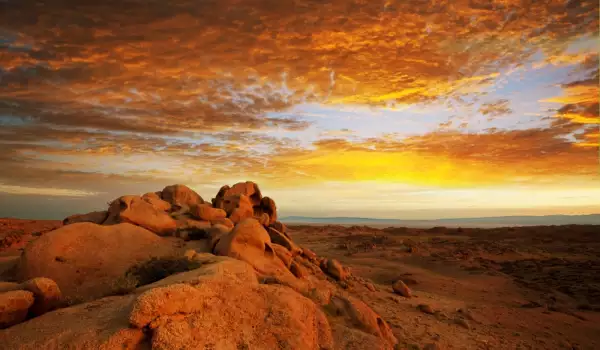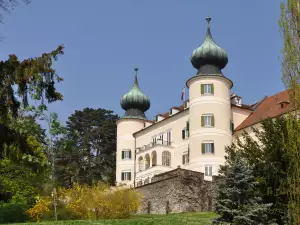Gobi Desert

The Gobi Desert is one of the largest inner- continental deserts in the world, and even though it provokes associations with lack of wilderness and life, Gobi impresses with its beautiful views, valuable and diverse flora and the hospitality of the locals. Gobi Desert occupies an area of 1 295 000 square miles within southern China and northern Mongolia. Gobi extends from east to west through the southern part of Mongolia and 30% of her vast desert area is locked between the Siberian Altai mountain and the Mongolian steppes to the north and to the south- the Tibetan Plateau.
In translation from Mongolian, Gobi name means "thirst" and you will hardly believe that once upon a time, there was a shoreless ocean here. According to some hypotheses, ancient settlements of the Uighur civilization existed at the time of Atlantis, in place of the Gobi Desert. This sandy kingdom extends 1610 km from southwest to northeast and 800 km from north to south and is considered the coldest desert after Antarctica.

On a global scale, Gobi ranks in fifth place with its size, but is highly notable for the territory of Asia. Part of it is covered with bare rocks, not sand. Temperature inversions are shocking and are determined by its geographical location - in the cold winter, winds from the Altai bring temperatures down to -40 degrees and in summer +50 degrees, which is why it is considered as the largest annual amplitude on earth.
In the northwestern part of the Gobi is the Nemegt Basin, where they found an incredible number of prehistoric artifacts and objects that attest to life in these lands more than 100 000 years ago. Paleontologists of the world know that part of the Gobi well, because there were discovered quite a lot of dinosaur eggs and bones of extinct animals and mammals, as well as prehistoric stone tools, etc.
The Gobi National Park was organized in this interesting desert in 1975 and it covers an area of 4, 3 million hectares. Contrary to expectations, Gobi can charm with its beautiful scenery and sand dunes, bathed in a variety of warm colors. In the desert, many oases occur where animals flock to quench their thirst. Gobi is the natural habitat of many endangered animals including the wild donkey, wild camel, gazelles, Gobi bears and other animals listed as endangered in the Red Book. Besides these, Gobi is also home to other fauna, like goats, ibex, snow leopards, lynx and others.

The name of the Gobi National Park is Gobi Gurvansaikhan National Park, or The three beautiful mountains, formed at the northern edge of the desert. This is actually a mountain range that is divided into 3 parts - East, Central and West, and composed of Devonian Paleozoic sedimentary rocks. It is in the Gobi Park that we find the most interesting places of the desert. Among them are Eagle Valley and the Singing Sands, which have beautiful sand dunes, surrounded by the formation of red rocks. Most famous of them are the Khongoryn Els.
Eagle Valley (Yolyn Am) is closed on all sides by high cliffs and the gorge is covered with a thin layer of ice. The ice cover remains frozen even during the hottest summer days. Southern Gobi is divided by the Karakorum, Ong's Sisters River, where the ruins of the temple Ong's Sisters are located.
Gobi Desert forms the Great Gobi protected area that covers 5.3 million hectares. This is the largest nature reserve in Asia and third largest in the world. Usually the most commonly used method to access Gobi is Dalanzadgad city, from which there is a link to the airport in the capital of Mongolia - Ulaanbaatar.















